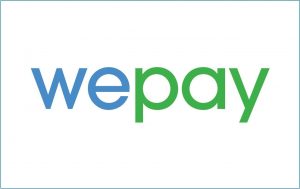Introduction
Open banking is a rapidly evolving concept in the financial industry that has the potential to revolutionize how individuals and businesses manage their finances. In simple terms, open banking refers to the practice of providing third-party access to financial data, such as transaction history, account balances, and payment records, through secure application programming interfaces (APIs).
Open banking aims to foster innovation, competition, and transparency in the financial sector by allowing customers to share their financial data with authorized third-party service providers. This enables these service providers to offer personalized and innovative solutions, such as financial management tools, budgeting apps, and loan comparison services, that can help consumers make better financial decisions.
Open banking has gained significant traction globally, and Canada is no exception. In recent years, the Canadian government, regulators, and financial institutions have actively explored the potential of open banking and initiated discussions on its implementation. The goal is to create an ecosystem where consumers have more control over their financial data, and businesses can deliver tailored, customer-centric solutions.
Open banking has the potential to transform the way Canadians access and manage their financial products and services. By harnessing the power of technology and data-sharing, open banking aims to enhance competition, improve customer experiences, and drive innovation in the financial sector. However, it also raises important questions regarding user privacy, data security, and regulatory oversight that need careful consideration.
In this article, we will explore the concept of open banking, its potential benefits and challenges, the initiatives underway in Canada, as well as the regulations and security measures in place. We will also highlight the opportunities that open banking presents for Canadian consumers and businesses. Whether you’re a consumer looking for a more seamless and personalized banking experience or a business aiming to leverage open banking to develop innovative financial solutions, this article will provide valuable insights into the evolving landscape of open banking in Canada.
History of Open Banking in Canada
The concept of open banking in Canada has its roots in the global trend towards greater consumer control over financial data. The advent of digital technology, coupled with increased customer expectations for personalized financial services, has led to a growing recognition of the need to enable secure data sharing between financial institutions and third-party service providers.
The discussion around open banking in Canada gained significant momentum in 2016 when the federal government launched a consultation on “Financial Sector Review.” The goal was to explore ways to modernize the regulatory framework and promote innovation in the financial sector. As part of this review, the government sought feedback on the potential benefits and risks of open banking.
In 2018, the Advisory Committee on Open Banking was formed by the Department of Finance Canada to further examine the potential impact of open banking in the Canadian context. The committee’s report, released in 2019, concluded that open banking could bring numerous benefits, such as increased competition, improved financial services, and enhanced data security and privacy.
However, the report also highlighted the need for robust consumer protection measures and emphasized the importance of maintaining public trust in the financial system. It recommended a phased implementation approach with a strong focus on consumer consent, data privacy, and security standards.
Following the Advisory Committee’s report, the Canadian government demonstrated its commitment to exploring open banking by launching a consultation process with stakeholders, including financial institutions, consumer groups, and technology providers. The consultation aimed to gather input and perspectives on key issues, such as data access and governance, security and privacy, and consumer rights and protections.
In 2020, the House of Commons Standing Committee on Finance released a report entitled “Consumer Protection in the Financial Sector.” The report recognized the potential benefits of open banking for consumers but also highlighted the need for robust regulatory oversight to protect individuals’ financial data.
While progress has been made, open banking is still in the early stages of development in Canada. The country’s regulatory framework and financial infrastructure are being carefully examined to ensure that any implementation of open banking will adhere to robust privacy and security standards, while also fostering innovation and competition in the financial sector.
It is worth noting that certain Canadian provinces, like Quebec and British Columbia, have already taken steps towards adopting open banking by introducing legislation to enable access to financial information by authorized third parties. These initiatives showcase the growing recognition of the potential benefits of open banking and set the stage for broader adoption across the country.
In the following sections, we will delve deeper into the concept of open banking, its benefits and challenges, as well as the specific initiatives and regulatory measures that are shaping the future of open banking in Canada.
What Is Open Banking?
Open banking is a progressive financial concept that aims to empower consumers by giving them greater control and access to their financial data. Essentially, it involves the secure sharing of personal financial information, such as transaction history, account balances, and payment records, with authorized third-party service providers through APIs.
One of the key principles of open banking is consent. Customers have the freedom to choose whether to share their financial data with third-party providers. This consent-driven approach ensures that individuals maintain control over their data and can decide which services can access their information.
Through open banking, customers can benefit from a range of innovative financial services and solutions. For example, they can use budgeting apps that analyze their spending patterns and provide personalized recommendations for saving money. They can also compare different loan options from various financial institutions to find the best terms and rates.
Access to financial data enables service providers to create innovative solutions tailored to individual needs. By analyzing financial information, these providers can offer personalized advice, customized products, and more efficient financial management tools to improve the overall customer experience.
Open banking also encourages competition and fosters market innovation. Traditional financial institutions face competition from fintech startups and other technology-driven companies that can leverage customer financial data to deliver innovative and tailored solutions. This competition drives financial institutions to improve their services and offer more value-added products to their customers.
Furthermore, open banking has the potential to simplify and streamline financial processes. For instance, customers can access multiple financial services through a single platform, eliminating the need to manage separate logins and navigate different interfaces. This convenience not only saves time but also enhances the overall user experience.
While open banking offers extensive benefits, it also raises important considerations regarding data privacy and security. To address these concerns, robust regulations and security measures are necessary to ensure the safe and responsible handling of financial data. Open banking initiatives often involve a close partnership among regulators, financial institutions, and technology providers to establish and enforce these regulations.
In summary, open banking revolutionizes how individuals access and manage their financial information. It gives customers greater control over their data, encourages competition and innovation in the financial sector, and enables the development of personalized and convenient financial solutions. By understanding what open banking entails, consumers can take advantage of this transformative concept to improve their financial lives.
Benefits of Open Banking
Open banking offers a plethora of benefits that can significantly enhance the financial lives of individuals and businesses. By enabling secure access to customer data, it fosters innovation, promotes competition, and improves the overall customer experience. Here are some key benefits of open banking:
- Improved Financial Management: Open banking allows for the aggregation of financial information from multiple accounts and institutions in one place. This enables individuals to have a holistic view of their finances, making it easier to manage budgets, track spending, and set financial goals. With access to real-time data, customers can make informed decisions about their money, leading to better financial outcomes.
- Personalized Financial Solutions: Through open banking, third-party service providers can analyze customer data and offer personalized financial solutions. This includes tailored product recommendations, such as optimized savings accounts, investment portfolios, and loan options. With the ability to access a wider range of financial products and services, individuals can find solutions that are better suited to their needs and goals.
- Enhanced Competition: Open banking fosters competition among financial institutions and fintech companies. This encourages institutions to improve their products and services, innovate, and offer competitive pricing. As a result, customers have access to a broader array of financial options and can choose the ones that best meet their requirements. This competitive landscape ultimately leads to improved customer experiences and greater customer satisfaction.
- Streamlined Account Access: Open banking simplifies the process of managing multiple financial accounts. Instead of logging in and navigating through various platforms, customers can use a single application that provides a consolidated view of their accounts. This convenience saves time and effort, as individuals can easily view their balances, transactions, and other important financial information without the need for multiple logins.
- Spurring Innovation: Open banking paves the way for increased innovation in the financial sector. With access to customer data, fintech startups and technology providers can develop creative and user-friendly financial tools and solutions. This includes innovative budgeting apps, automated investment platforms, and more efficient payment systems. Open banking encourages continuous improvement and empowers customers with cutting-edge financial technologies.
- Financial Inclusion: Open banking has the potential to promote financial inclusion by providing access to financial services for underserved populations. By leveraging customer data, third-party providers can better assess risk and offer tailored financial solutions to individuals who may have previously been excluded from traditional banking services. This can help bridge the gap between the financially underserved and the financial system, promoting economic stability and growth for all.
These are just some of the numerous benefits that open banking can offer. However, it is essential to recognize that these advantages must be accompanied by strong regulations and security measures to protect customer data and ensure privacy. With the right balance of innovation, competition, and consumer protection, open banking has the potential to revolutionize the financial industry and enhance the financial well-being of individuals and businesses.
Challenges and Concerns
While open banking brings numerous benefits and opportunities, it also presents various challenges and concerns that must be addressed to ensure its successful implementation. These challenges revolve around data security, privacy, regulatory compliance, and consumer trust. Here are some key challenges and concerns associated with open banking:
- Data Security: As open banking involves the sharing of sensitive financial data, data security is paramount. There is a need for robust security measures to protect customer information from unauthorized access, breaches, and cyberattacks. Financial institutions and third-party service providers must invest in advanced security protocols, encryption techniques, and secure API infrastructure to ensure the confidentiality and integrity of customer data.
- Privacy: Open banking requires customers to share their financial data with third-party providers. This raises concerns about the privacy of personal information and the potential misuse of data. Regulators and financial institutions must enforce strict privacy standards, ensuring that customers have control over how their data is accessed, shared, and used. Clear consent mechanisms and transparent data governance policies are essential to safeguarding customer privacy.
- Regulatory Compliance: Open banking introduces a complex regulatory landscape. Regulators must establish and enforce regulatory frameworks that strike a balance between innovation and consumer protection. Compliance with data protection laws, anti-money laundering regulations, and Know Your Customer (KYC) requirements pose significant challenges to financial institutions and third-party providers. Ensuring compliance across multiple jurisdictions further complicates the regulatory environment.
- Technical Integration: The successful implementation of open banking relies on seamless technical integration between financial institutions and third-party providers. This requires robust and standardized APIs that facilitate secure data sharing and enable smooth information flow. Achieving this level of integration may be challenging, as financial institutions may have different legacy systems and technical infrastructures that need to be updated or replaced.
- Consumer Trust and Education: Building and maintaining consumer trust is essential for the widespread adoption of open banking. Customers need to feel confident that their financial data is being handled securely and responsibly. Financial institutions and service providers must educate customers about the benefits and risks of open banking, as well as provide clear and transparent information about how their data will be used. Establishing strong consumer protection measures and enforcing strict accountability mechanisms are crucial in fostering trust.
- Digital Divide: Open banking heavily relies on digital technology and internet connectivity. However, there are segments of society, particularly in rural areas or among older populations, who may not have access to reliable internet or the necessary technological infrastructure. Bridging the digital divide is crucial to ensure that open banking benefits all individuals, regardless of their location or age.
Addressing these challenges and concerns requires collaboration among regulators, financial institutions, and technology providers. Strong regulatory frameworks, ongoing cybersecurity efforts, transparent privacy policies, and robust consumer education initiatives are essential to overcome these obstacles. By mitigating these challenges, open banking can flourish, delivering the promised benefits and empowering individuals and businesses with innovative and secure financial solutions.
Open Banking Initiatives in Canada
Canada has taken significant strides in exploring open banking and laying the groundwork for its implementation. Various initiatives, discussions, and pilot projects have emerged to shape the future of open banking in the country. Here are some notable open banking initiatives in Canada:
- The Advisory Committee on Open Banking: In 2018, the Canadian government established the Advisory Committee on Open Banking to study the potential benefits, risks, and implementation strategies of open banking in Canada. The committee’s report, released in 2019, provided valuable insights and recommendations to guide the development of open banking policies and regulations.
- The Department of Finance Canada Consultations: The Department of Finance Canada has actively engaged with stakeholders to gather perspectives on open banking. Through targeted consultations, the department has sought input from financial institutions, technology providers, consumer groups, and other interested parties. These consultations have played a crucial role in shaping the future direction of open banking in Canada.
- Provincial Open Banking Initiatives: Some Canadian provinces, such as Quebec and British Columbia, have taken proactive steps towards open banking by introducing legislation to facilitate data access and empower consumers. These initiatives showcase the willingness of provincial governments to embrace open banking principles and encourage innovation within their jurisdictions.
- Pilot Projects and Collaborations: Financial institutions and technology providers in Canada have initiated pilot projects and collaborations to explore the possibilities of open banking. These projects involve partnerships between banks and fintech companies to develop and test open banking solutions in a controlled environment. These initiatives are crucial for gathering real-world insights and addressing technical, security, and privacy considerations.
- Standardization Efforts: Standardization plays a vital role in ensuring interoperability and seamless integration between different stakeholders in the open banking ecosystem. Several industry organizations and associations in Canada are working towards developing common data standards and APIs that enable secure and efficient data sharing. These efforts aim to streamline open banking implementation and enhance interoperability among financial institutions and third-party providers.
While these initiatives demonstrate the commitment of stakeholders to explore open banking, there is still much work to be done. Continued collaboration, dialogue, and regulatory advancements are necessary to fully realize the potential of open banking in Canada. Regulators, financial institutions, and technology providers must work together to establish clear rules, build robust infrastructure, and address challenges surrounding privacy, security, interoperability, and consumer protection.
Open banking initiatives are expected to evolve gradually, with a phased approach to implementation. This approach allows for thorough testing, addressing concerns, and ensuring the development of a resilient and secure ecosystem. As open banking gains traction in Canada, it has the potential to revolutionize the financial landscape, driving innovation, improving customer experiences, and delivering personalized financial solutions tailored to the needs of Canadians.
Regulations and Security Measures
As open banking continues to gain momentum in Canada, regulators and industry stakeholders recognize the importance of robust regulations and security measures to protect consumer data and ensure the safe implementation of open banking practices. Here are some key aspects related to regulations and security measures in the context of open banking:
- Privacy Regulations: Privacy regulations play a critical role in safeguarding customer data in open banking. Existing privacy laws, such as the Personal Information Protection and Electronic Documents Act (PIPEDA), regulate the collection, use, and disclosure of personal information. Additionally, specific open banking regulations are being developed to provide clarity and guidance regarding the sharing and protection of financial data.
- Data Protection and Security: Robust security measures are essential to protect consumer data in open banking. Financial institutions and third-party providers must implement industry-leading security protocols, encryption techniques, and secure API infrastructure to prevent unauthorized access, data breaches, and cyber threats. Regular audits and assessments can ensure compliance with security standards and identify and address any vulnerabilities.
- Consent Mechanisms: Customer consent is a fundamental principle in open banking. Clear and transparent consent mechanisms must be in place to ensure that individuals have control over their data and can provide informed consent for its sharing. This includes providing clear information about the purpose of data sharing, the parties involved, and the specific data elements being accessed.
- Regulatory Oversight and Compliance: Regulatory oversight is necessary to ensure compliance with open banking regulations and standards. Regulators play a crucial role in monitoring the operations of financial institutions and third-party providers to ensure adherence to privacy, security, and consumer protection requirements. Regular audits and assessments, along with the enforcement of sanctions for non-compliance, help foster trust and maintain accountability.
- Interoperability and Standardization: Interoperability and standardized practices are crucial for the smooth functioning of open banking. Developing common data standards and API specifications allows for seamless data sharing and integration between different systems. Collaboration among industry stakeholders and regulatory bodies is crucial to establish these standards, ensuring consistency, reliability, and enhanced security across the open banking ecosystem.
- Consumer Rights and Redress: Open banking regulations should include provisions that protect consumer rights and provide avenues for redress in case of any issues or disputes. Clear mechanisms for recourse, such as complaints and dispute resolution processes, empower consumers and provide them with the confidence to engage in open banking services. Transparent information about consumer rights, liabilities, and responsibilities is essential to build trust.
Regulations and security measures must strike a balance between consumer protection, privacy, and innovation. They should foster a secure and trustworthy environment that encourages the responsible sharing of financial data while ensuring robust safeguards are in place to protect the privacy of individuals and maintain the integrity of the financial system.
It is crucial for regulators, financial institutions, and technology providers to collaborate closely to develop and enforce comprehensive regulations and security measures specific to open banking. By doing so, they can build a strong foundation for open banking in Canada, ensuring the security of customer data and promoting transparency, innovation, and consumer trust in the financial industry.
Opportunities for Canadian Consumers and Businesses
The advent of open banking brings forth a myriad of opportunities for Canadian consumers and businesses alike. By empowering individuals with greater control over their financial data and fostering innovation in the financial sector, open banking opens up new possibilities for personalized financial solutions and improved financial experiences. Here are some key opportunities that open banking presents:
- Personalized Financial Services: Open banking enables the development of personalized financial services that cater to the specific needs and goals of consumers. By leveraging customer data, financial institutions and third-party providers can offer customized recommendations, tailored products, and more efficient financial management tools. Canadians can access services such as budgeting apps, investment advice, and loan comparison platforms that are designed to meet their unique requirements.
- Access to New and Innovative Products: With open banking, consumers gain access to a wider range of financial products and services. Fintech startups and technology-driven companies can leverage customer data to create innovative solutions that were previously inaccessible. This includes simplified loan applications, automated investment platforms, and seamless payment systems. Canadians can benefit from the convenience and efficiency of these new offerings, ultimately improving their financial lives.
- Enhanced Customer Experience: Open banking paves the way for an improved customer experience in the financial sector. By integrating various financial accounts and services into a single platform, customers can have a consolidated view of their finances, simplifying money management. Seamless account integration, access to real-time information, and personalized recommendations contribute to a more streamlined and intuitive financial experience for Canadians.
- Increased Financial Inclusion: Open banking has the potential to promote financial inclusion by providing access to financial services for underserved populations. With enhanced data insights and risk assessment capabilities, financial institutions and third-party providers can offer tailored solutions to individuals who previously faced barriers to traditional banking services. Open banking can bridge the financial divide, fostering economic growth and stability for all Canadians.
- Promotion of Competition and Innovation: Open banking encourages competition among financial institutions and fosters innovation in the financial industry. Traditional banks face increased competition from fintech startups and technology-driven companies that can leverage customer data to deliver innovative products and services. This competition drives financial institutions to enhance their offerings, improve customer experiences, and adopt innovative technologies, ultimately benefiting consumers and businesses alike.
- New Business Opportunities: Open banking creates opportunities for businesses to develop innovative solutions and enter new markets. Fintech startups and technology providers can leverage open banking APIs to build innovative financial applications and services. This opens up avenues for partnerships and collaborations between traditional financial institutions and disruptive startups, creating a dynamic ecosystem that drives innovation and market growth.
Open banking provides a platform for collaboration and innovation in the financial sector, offering Canadian consumers and businesses the potential to access more personalized, efficient, and innovative financial services. However, it is important to balance the opportunities with robust privacy protections, security measures, and regulatory oversight to ensure the responsible utilization of customer data and maintain public trust. As open banking continues to develop in Canada, it holds the promise of transforming the financial landscape, creating better financial outcomes and experiences for both individuals and businesses.
Conclusion
Open banking is rapidly emerging as a transformative concept in the financial industry, offering significant opportunities for consumers and businesses in Canada. By enabling secure data sharing and fostering innovation, open banking has the potential to revolutionize the way Canadians access and manage their financial products and services.
Throughout this article, we have explored the history of open banking in Canada, its definition, benefits, challenges, and the various initiatives and regulations shaping its future. Open banking empowers customers by providing personalized financial solutions, improving the overall customer experience, and promoting financial inclusion. It also encourages competition and innovation in the financial sector, driving financial institutions to enhance their offerings and adopt new technologies.
However, the successful implementation of open banking requires careful consideration of privacy, security, and regulatory compliance. Robust regulations and security measures are necessary to protect customer data, maintain privacy, and build consumer trust. Collaboration between regulators, financial institutions, and technology providers is critical to developing comprehensive frameworks that balance innovation with consumer protection.
As open banking continues to evolve in Canada, it is important to recognize that this transformation will be gradual. The phased approach to implementation, along with pilot projects and stakeholder consultations, allows for testing, addressing concerns, and fine-tuning the open banking ecosystem.
Looking ahead, open banking is expected to bring about a more accessible, competitive, and innovative financial system in Canada. Consumers will enjoy personalized financial services, convenient account access, and increased financial inclusion. Businesses will have opportunities to develop innovative solutions and enter new markets.
In conclusion, open banking holds immense potential to reshape the financial landscape in Canada. While there are challenges and complexities to navigate, the benefits for consumers and businesses are substantial. By embracing open banking and addressing concerns, Canada can pave the way for a modern, inclusive, and dynamic financial ecosystem that empowers individuals and fosters economic growth.

























